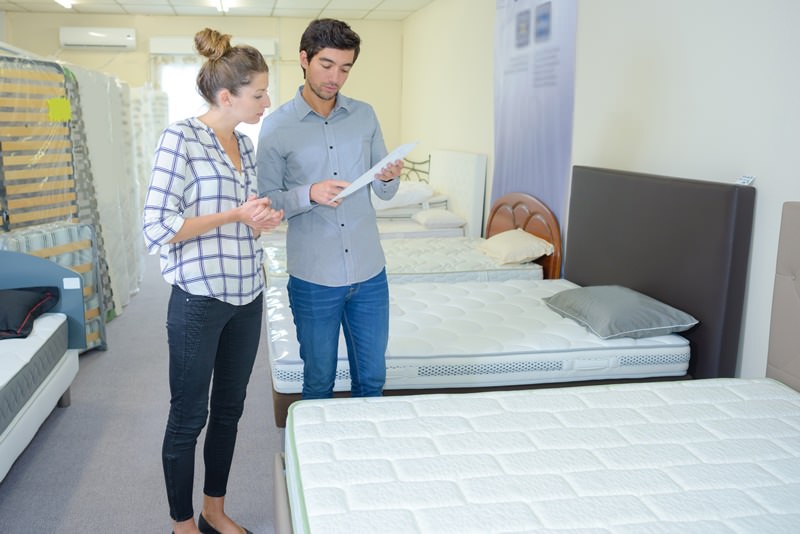Choosing a mattress to share with someone, especially if that someone is a partner, is tricky. This is almost always the case when you have different preferences. Keep in mind that the right mattress is a critical commodity in any relationship. Buy something uncomfortable, and you risk jeopardizing you and your partner’s quality of sleep and comfort.
Before making the purchase, make sure you consider a host of factors, such as frames and foundational support, mattress size, and essential features like motion isolation. To help you evaluate these factors and find a mattress that suits both you and your partner’s needs, here’s a comprehensive guide to steer you in the right direction.
- Mattress Size
Purchasing a mattress that comfortably accommodates the weight of two or more than two people is vital. If you’re sharing your bed with your partner, you shouldn’t look for anything smaller than queen size. This kind of mattress is typically 61 inches wide, provides more than enough sleeping space for two people, and prevents the agitating possibility of a restless partner.
To stay on the safe side, you can also purchase a California King or King mattress. A king-sized mattress is 80 inches long and 76 inches wide, and a Cal-King is 84 inches long and 72 inches wide.
- Frames and Foundations
A sturdy and reliable frame is essential to support two or more than two people. Any frame or foundation which fulfills the quality standards of the mattress maker is reasonable provided it doesn’t compromise on the durable center support. Durable center support is a deal-breaker if it’s not tailor-made to support two or more than two people.
- Motion Isolation
Motion isolation is another significant feature you should look for in a mattress. It reduces the impact of movements and minimizes motion transfer to the mattress’s layers. If you and your partner move a lot or need to constantly leave the mattress for a late-night bathroom visit, this feature will help reduce disturbances, accommodate different sleep positions, and improve the quality of sleep.
Best Mattresses for motion isolation are mainly latex mattresses, foam mattresses, and mattresses equipped with pocketed coil mechanisms.
- Edge Support
Edge support is another important consideration when you’re buying your mattress for two or more than two people. For single people, edge support isn’t a necessity, because their weight is mostly concentrated around the mattress’s center. But for mattress sharers, it’s a significant selling point, considering they’re always lying or sleeping close to the bedding’s edges. If you buy a mattress with weak edge support, you might slip down to the floor more often than you’d like.
- Intimacy
If you’re sharing a mattress with your lover, the mattress is going to handle a lot. Mainly, this includes rough and bumpy sexual intercourse. Couples overlook this little detail when purchasing their mattress, which is a rookie mistake.
Mattresses that are made for shifting and jumpy sex are latex, air, and springs. Specifically, spring mattresses and air mattresses provide more durability for extensive movement than other mattress types. These options are great for you if you tend to get creative while having sex and experiment with some freaky sex positions.
If you prefer a mattress that doesn’t make a lot of noise because you have thin walls or alert kids in the neighboring room, memory foam and latex are your best bet. All-foam mattresses are specially designed to absorb noise and keep things squeaky quiet.
- Firmness
If the person you’re sharing your mattress with has back problems or generally prefers a mattress with a certain degree of firmness, you must consider this factor.
In this situation, you often need to make a compromise. If, for example, one of you prefers a sturdy mattress and the other a softer fabric, you’ll have to buy one that’s medium-firm to meet each other halfway.
However, if this doesn’t sit well with you, you can buy mattress toppers. You can position a mattress topper on one side to make its degree of firmness consistent with what the sleeper on that side prefers. Alternatively, you can also invest in separate mattress toppers with varying degrees of firmness so that your mattress remains structurally intact and doesn’t have an uneven and slanting surface for either user.
Summary
Buying a mattress requires a lot of forethought. From mattress size to firmness and edge support, you’ll have to discuss a lot with the person you’re going to share your mattress with. If you’re not satisfied with a mattress-related decision, you shouldn’t hesitate to voice your concern and make the necessary accommodations. Your long-term health and intimacy of your relationship depend on your discretion.













